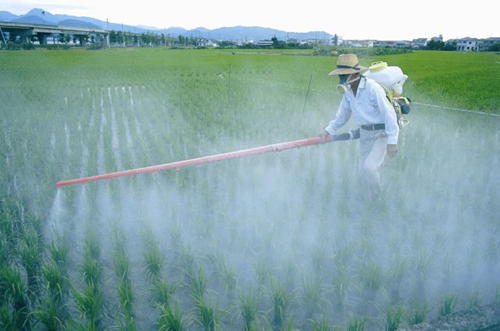It's a New Day in Public Health.
The Florida Department of Health works to protect, promote, and improve the health of all people in Florida through integrated state, county, and community efforts.
Chemicals
Florida Health

A chemical emergency occurs when a hazardous chemical has been released, and the release has the potential to harm peoples’ health. Chemical releases can be unintentional, as in the case of an industrial accident, or intentional, as in the case of a terrorist attack.
Arsenic poisoning, carbon monoxide poisoning, mercury poisoning, pesticide-related illness and injury, and ricin toxin poisoning are listed as notifiable diseases in the State of Florida. All practitioners, hospitals, and laboratories in Florida are required to notify the Florida Department of Health (DOH) of diseases or conditions of public health significance under Section 381.0031, Florida Statutes and Chapter 64D-3, Florida Administrative Code (FAC).
- Methods of Exposure
- Categories of Chemicals
- References
Chemicals enter the body through the digestive tract, eyes, lungs, or skin. Within the body, the effect of the chemical depends on the toxicity and dose. In addition, the outcome of exposure is determined by the way the chemical enters the body, the physical properties of the chemical, and the susceptibility of the individual. Exposure to chemical substances can have acute (immediate) or chronic (long-term) health effects.
Some chemicals that are hazardous have been developed by military organizations for use in warfare. Examples include nerve agents (e.g., Sarin and VX), mustards (e.g., sulfur mustards and nitrogen mustards), and choking agents (e.g., Phosgene). Many hazardous chemicals are often used in industry and found in residential homes (e.g., chlorine, ammonia). Others are found in nature (e.g., ricin from castor beans).
There are several types and categories of hazardous chemicals:
- Biotoxins are poisons that come from plants or animals.
- Blister agents, or vesicants, are chemicals that severely blister the eyes, respiratory tract, and skin on contact.
- Blood agents are poisons that affect the body by being absorbed into the blood.
- Caustics, or acids, are chemicals that burn or corrode people’s skin, eyes, and mucus membranes (the lining of the nose, mouth, throat, and lungs) on contact.
- Choking, or pulmonary agents, are chemicals that cause severe irritation or swelling to the respiratory tract, for example the lining of the nose and throat or lungs.
- Incapacitating agents temporarily and nonlethally impair the performance of a person by targeting the central nervous system.
- Long-acting anticoagulants are poisons that can cause uncontrolled bleeding by interfering with clotting mechanisms.
- Some metals are toxic to the body.
- Nerve agents inhibit proper nervous system function.
- Organic solvents are agents that damage the tissues of living things by dissolving fats and oils.
- Riot control agents, or tear gas, are highly irritating agents normally used by law enforcement for crowd control, or by individuals for protection.
- Toxic alcohols are poisonous alcohols that can damage the heart, kidneys, and nervous system.
- Vomiting agents are chemicals that cause nausea and vomiting.
- Centers for Disease Control and Prevention Agency for Toxic Substances and Disease Registry A-Z Index http://www.atsdr.cdc.gov/az/a.html
- Centers for Disease Control and Prevention Chemical Emergencies
https://emergency.cdc.gov/chemical/ - Centers for Disease Control and Prevention National Institute for Occupational Safety and Health The Emergency Response Safety and Health Database: All Agents https://www.cdc.gov/niosh/ershdb/AgentListAlpha.html



Connect with DOH